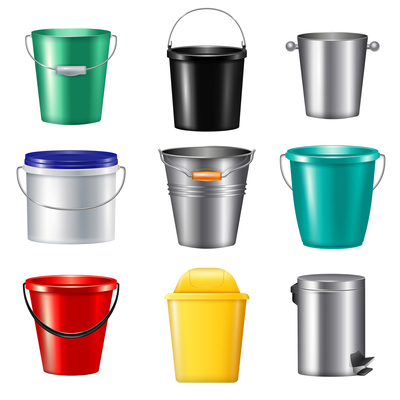Bucket Management
- March 25, 2024
- Posted by: Philip Struble
- Category: Uncategorized

“It’s just a drop in the bucket, but that’s how buckets are filled.”
Buckets as Tasks
Buckets seem to be the popular metaphor for business management systems.
The idea is to take the tasks you have to do and place them in specific buckets.
Four Buckets
There is the four-bucket system where you place tasks into the following buckets:
Bucket 1 – Want to Do (prioritization)
Bucket 2 – Have to Do (schedule)
Bucket 3 – Need to Do (bulk up) and
Bucket 4 – Can Do (selective).
Five Buckets
Then, there is the five-bucket system to manage all tasks effectively and efficiently. These tasks are separated into these buckets:
Bucket 1: Work In Pipeline
Bucket 2: Work In Progress
Bucket 3: Work Completed
Bucket 4: Track Completed
Bucket 5: Goal Achieved
Twenty Buckets
And then, there is a system using twenty buckets. Here, the buckets are divided into core competencies that every business must master to create a sustainable business. These competencies include results, customers, strategy, Drucker, book, program, people, culture, team, hoopla, donor, volunteer, crisis, board, budget, delegation, operations, systems, printing, and meetings.
Other Buckets
Of course, there are probably many more ways to divide a business’s operation into more or fewer buckets.
We can also view a business not in terms of a bucket holding specific tasks, but that of a bucket as a different metaphor.
There is the “lunch bucket” theory referencing back to the days when workers carried a literal lunch bucket to work. This management tool is designed around the concept that the worker has an investment in the place to which he (or she) carries a lunch bucket, and that lunch bucket should hold a share of the profits of the business.
And then there is (at least for this blog) a bucket concept that is not necessarily a management system but a visualization of your overall business (compliments to Seth Godin).
This concept is based on physical buckets. For example, if you throw a bucket of water on a small campfire, you’ll succeed in putting it out. But, if you try to use a bucket to refill a dried-out lake, not much will happen.
I this analogy, the bucket represents our efforts. If you put in eight hours on a ten-hour project, you’ll fail. But put that much effort into a smaller, six-hour project, and the client will be delighted. The two challenges represented by the buckets are:
- Pick the right size bucket for the problem you’re trying to solve.
- Make sure you have the resources to fill it all the way to the top.
The Bible
In the same way that buckets are useful imagery in business, they are similarly useful in the Bible.
Numbers 24:7 says,
Water will flow from their buckets;
their seed will have abundant water.“Their king will be greater than Agag;
their kingdom will be exalted.
In fact, buckets are probably not as much of a metaphor in the Bible as they are a reality. The Ancient Near East was a desolate, arid land. And if you wanted a drink or were in need of watering your crops or livestock, you needed a bucket to get the water from the well or cistern. If there is no bucket, you are out of luck.
The Book of John contains a popular story about Jesus and the Samaritan woman (John 1-42). In this story, Jesus was traveling through Samaria. And while His disciples went searching for food, Jesus waited at a well. The well was approached by a Samaritan woman, whom He asked to draw Him a drink of water.
9 The Samaritan woman said to him, “You are a Jew and I am a Samaritan woman. How can you ask me for a drink?” (For Jews do not associate with Samaritans.[a])
10 Jesus answered her, “If you knew the gift of God and who it is that asks you for a drink, you would have asked him and he would have given you living water.”
11 “Sir,” the woman said, “you have nothing to draw with and the well is deep. Where can you get this living water? 12 Are you greater than our father Jacob, who gave us the well and drank from it himself, as did also his sons and his livestock?”
13 Jesus answered, “Everyone who drinks this water will be thirsty again, 14 but whoever drinks the water I give them will never thirst. Indeed, the water I give them will become in them a spring of water welling up to eternal life.”
15 The woman said to him, “Sir, give me this water so that I won’t get thirsty and have to keep coming here to draw water.” (John 4:9-15)
While there is plenty to draw from this brief passage, the bucket message is that Jesus did not have a bucket, and the woman did. But Jesus had what the woman needed but had yet to realize. In the end, however, the woman did not need her bucket to receive eternal happiness and fulfillment, which Jesus had.
Buckets are useful for analyzing our businesses. They can be metaphors or physical instruments.
Regardless, the only important bucket is the one that contains Christ’s Truth, on which we can rely to run an honorable, sustainable business.
